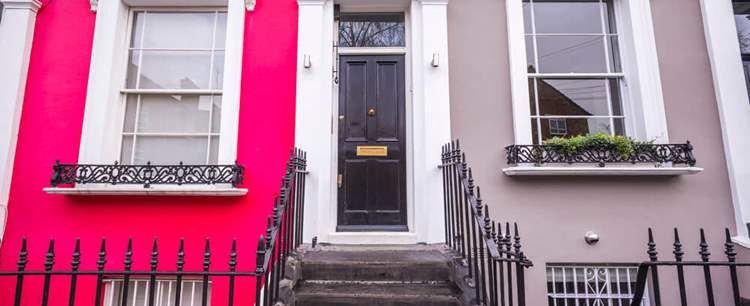Bans on evictions designed to help tenants weather the impact of lockdowns, soaring rents, unexpected property hotspots, and rural property highlights are all subjects that have seized the recent news headlines.
So, let’s take a closer look.
Further Support For Commercial And Residential Tenants
Last week the government announced an extension of measures designed to provide some relief to businesses facing closure as a result of successive coronavirus lockdowns – especially those in the hospitality industry.
Whereas the ban on commercial landlords’ evicting struggling businesses was to have been lifted at the end of March, it has now been extended until the 30th of June.
Residential tenants have also seen some relief and support by way of the extension until the 31st of May of the current ban on evictions carried out by court-appointed bailiffs – except in the most serious of circumstances such as incidents of domestic abuse in the home or fraud in obtaining the tenancy in the first place.
This extends until the 31st of May, the current arrangements whereby landlords must give at least six months’ notice of any intention to evict (but for the exceptions already noted).
UK Rents Jump As Supply Plummets
Possibly one of the unexpected consequences of the pandemic and its string of lockdowns and restrictions has been the reduction properties available for rent, according to Mortgage Strategy this week. And as supply is squeezed, so rents go up.
According to the article, there were 300,000 fewer properties advertised for rent since the beginning of the pandemic – and that represents an available rental housing stock that is around one-fifth smaller.
In all ten regions of the UK, it argued, the stock of available rental homes fell by double digits – the only exception being London, where there were 42% more available tenancies compared with the previous 12 months.
The biggest reductions in the number of rental homes available were in the South West of England and in Wales, where there were 48% fewer homes to rent this February that the same month last year.
In response to the plummeting supply of let accommodation, monthly rents have climbed by an average of £60 across the country as a whole – with the exception of London.
The 10 Most Affordable Hotspots To Buy A Property In Britain
Most reports have described a robust bounce-back by the property market post-pandemic. But there are several places in the UK – according to a story in the Daily Mail recently – where house prices have bucked the trend and become more affordable.
The list of affordable property hotspots sees clusters in the North East of England, western Cumbria, South Wales, and the South West of Scotland.
Top of this list, for instance, is the small town of Shildon in County Durham, where the average price of a house if just £59,468 – and average annual earnings in that community are £53,446.
Other towns where home have become notably more affordable in the past 12 months include places as far apart as Bideford in North Devon, Malvern in Worcestershire, and Cleator Moor in Cumbria.
Industry Has No Faith In The Government To Solve Cladding Problems Quickly
It will soon be four years since the Grenfell Tower disaster in West London. The tower block inferno that killed 72 people and was almost certainly caused by inappropriate, highly-inflammable cladding used on the outside of the building.
Despite that passage of time – and a long-running and on-going public enquiry – few professionals appear at all confident in the government’s ability to resolve the long-standing issues surrounding the removal of such cladding on high-rise buildings.
According to a survey cited by Property Wire on the 15th of March, only around 1% of property professionals – mortgage lenders, brokers, surveyors, and other property specialists – have total faith in the government’s ability to resolve the outstanding issues.
Around half of those surveyed were “not confident”, a third (34%) “unsure”, and only 15% “somewhat confident”.
Harborough Is The Rural Area With The Highest Price Growth
In our news roundup of the 3rd of February, we raised the question of whether the pandemic had prompted an exodus to the countryside by homeowners, property investors, and tenants alike.
A story in Property Wire this week showed that at least one market town in Leicestershire could bear out evidence of just such an influx of newcomers.
Harborough, a rural district in Leicestershire has seen house prices rise by a staggering 33.6% in the five years to the end of 2020 – from £245,582 in 2015 to £328,172.
Other predominantly rural areas showing high rates of growth in house prices include East Northamptonshire (32.8%), Rutland (31.7%) and Hinckley and Bosworth (31.3%).







